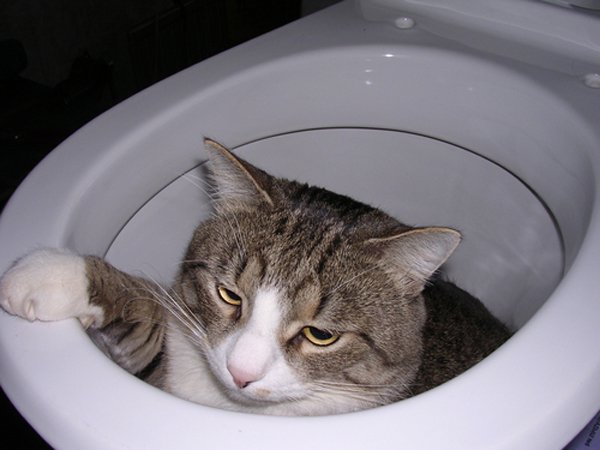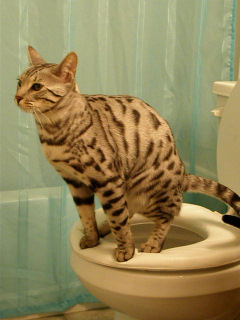Significant Reasons Why Animal Waste Ought to Never Be Flushed Down the Toilet
Significant Reasons Why Animal Waste Ought to Never Be Flushed Down the Toilet
Blog Article
The article author is making a number of great pointers on the subject of Don't Flush Your Pets Poo Down The Loo, Vet Warns in general in this article directly below.

When it comes to disposing of waste, especially animal waste, many people often resort to the hassle-free alternative of flushing it down the commode. Nonetheless, this seemingly very easy service can have significant repercussions for the environment and public health. In this write-up, we'll explore why flushing pet waste down the toilet is a poor concept and give different approaches for correct disposal.
Introduction
Correct waste disposal is critical for maintaining ecological sustainability and public health. While it might seem safe to flush animal waste down the toilet, it can lead to various problems, both for the setting and human wellness.
Threats of flushing pet waste
Environmental effect
Flushing pet waste presents dangerous bacteria and pathogens into waterways, which can negatively influence marine ecological communities. These microorganisms can pollute water resources and damage marine life, interrupting fragile environments.
Public health issues
Pet waste consists of unsafe bacteria such as E. coli and Salmonella, which can pose serious health risks to humans. Flushing animal waste down the commode can contaminate water supplies, causing the spread of conditions and infections.
Alternatives to flushing
Rather than purging pet waste down the commode, there are several alternative disposal methods that are much more environmentally friendly and hygienic.
Composting
Composting animal waste is an environmentally friendly means to throw away it. By composting, organic matter is broken down right into nutrient-rich dirt, which can be made use of to feed yards and plants.
Landfill disposal
Disposing of pet waste in a landfill is another alternative. While not as environmentally friendly as composting, it is a safer option to flushing, as it stops the contamination of water resources.
Pet waste disposal systems
There are customized animal waste disposal systems readily available that securely and hygienically take care of animal waste. These systems typically use enzymes to break down waste and get rid of odors.
Steps to appropriate animal waste disposal
To make certain proper disposal of animal waste, follow these steps:
Scooping and nabbing waste
On a regular basis scoop and bag pet waste using eco-friendly bags. This stops waste from infecting the setting.
Making use of marked waste containers
Dispose of bagged pet waste in assigned waste containers, such as compost containers or land fill bins. Avoid flushing it down the bathroom whatsoever prices.
Cleaning up litter boxes and pet dog areas regularly
Consistently clean litter boxes and animal locations to avoid the accumulation of waste and microorganisms. Usage pet-safe cleaning products to preserve hygiene.
Benefits of proper disposal approaches
Embracing appropriate disposal methods for animal waste provides a number of benefits:
Reduced environmental pollution
Appropriate disposal techniques decrease the threat of environmental pollution, shielding waterways and ecosystems from contamination
Lessened threat of water contamination.
By avoiding flushing pet waste down the bathroom, the danger of water contamination is substantially here lowered, protecting public health.
Improved sanitation and health
Correct disposal techniques advertise much better hygiene and hygiene, creating a much safer setting for both humans and animals.
Verdict
Finally, flushing animal waste down the bathroom is harmful to the atmosphere and public health. By adopting different disposal approaches and complying with proper waste monitoring methods, we can reduce the adverse effect of animal waste and add to a cleaner, much healthier world.
What To Do With Dog Poo – The Do's And Don'ts Of Disposing Of Faeces
Dog poo bins
Some councils provide dedicated dog waste bins in popular dog-walking areas that can take dog poo that has been bagged but you can legally dispose of dog waste in any public litter bin, as long as it is securely bagged. This also applies to your wheelie bin at home.
Do not flush
Water companies do not recommend flushing dog faeces down the toilet because certain parasites can survive the water processing treatment and are potentially harmful to humans. You should also never consider flushing dog poo that has been bagged down the toilet as the bags will not break down and instead create severe blockages in the sewage system.
In the woods
The Forestry Commission promotes a ‘stick and flick’ method for dealing with waste in the woods. This means finding a stick and using it to flick any poo from off the path so that it is out of the way of other walkers. You could also bury it as long as it is not in an area where there might be livestock.
Livestock
Parasites found in dog poo can be transmitted to livestock if they inadvertently eat infected faeces that has been left on grazing land. This could result in the death of sheep or abortion in cattle so you should always make sure you pick up your dog’s waste in fields where livestock could be present.

Consistently clean litter boxes and animal locations to avoid the accumulation of waste and microorganisms. Usage pet-safe cleaning products to preserve hygiene.
Benefits of proper disposal approaches
Embracing appropriate disposal methods for animal waste provides a number of benefits:
Reduced environmental pollution
Appropriate disposal techniques decrease the threat of environmental pollution, shielding waterways and ecosystems from contamination
Lessened threat of water contamination.
By avoiding flushing pet waste down the bathroom, the danger of water contamination is substantially here lowered, protecting public health.
Improved sanitation and health
Correct disposal techniques advertise much better hygiene and hygiene, creating a much safer setting for both humans and animals.
Verdict
Finally, flushing animal waste down the bathroom is harmful to the atmosphere and public health. By adopting different disposal approaches and complying with proper waste monitoring methods, we can reduce the adverse effect of animal waste and add to a cleaner, much healthier world.
What To Do With Dog Poo – The Do's And Don'ts Of Disposing Of Faeces
Dog poo bins
Some councils provide dedicated dog waste bins in popular dog-walking areas that can take dog poo that has been bagged but you can legally dispose of dog waste in any public litter bin, as long as it is securely bagged. This also applies to your wheelie bin at home.
Do not flush
Water companies do not recommend flushing dog faeces down the toilet because certain parasites can survive the water processing treatment and are potentially harmful to humans. You should also never consider flushing dog poo that has been bagged down the toilet as the bags will not break down and instead create severe blockages in the sewage system.
In the woods
The Forestry Commission promotes a ‘stick and flick’ method for dealing with waste in the woods. This means finding a stick and using it to flick any poo from off the path so that it is out of the way of other walkers. You could also bury it as long as it is not in an area where there might be livestock.
Livestock
Parasites found in dog poo can be transmitted to livestock if they inadvertently eat infected faeces that has been left on grazing land. This could result in the death of sheep or abortion in cattle so you should always make sure you pick up your dog’s waste in fields where livestock could be present.

We are very excited about 10 Things You Should Never Flush Down The Toilet and I'm hoping you enjoyed the new piece. If you liked our blog posting plz don't forget to share it. Thanks so much for your time spent reading it.
Website Report this page